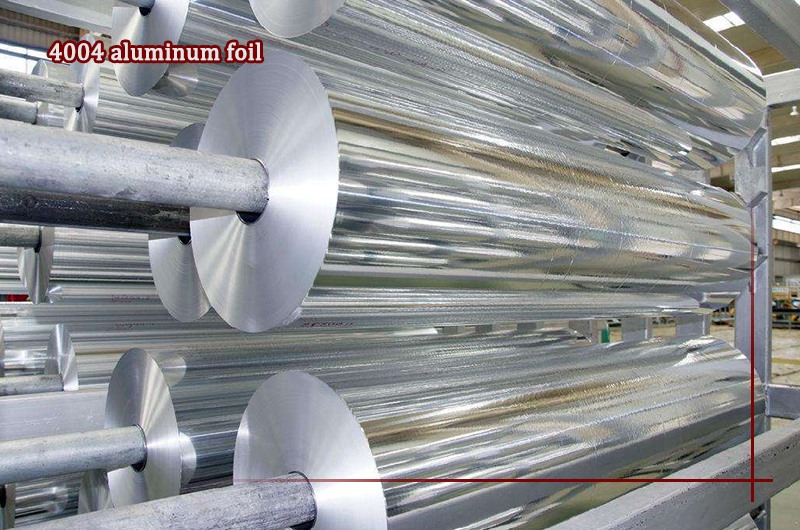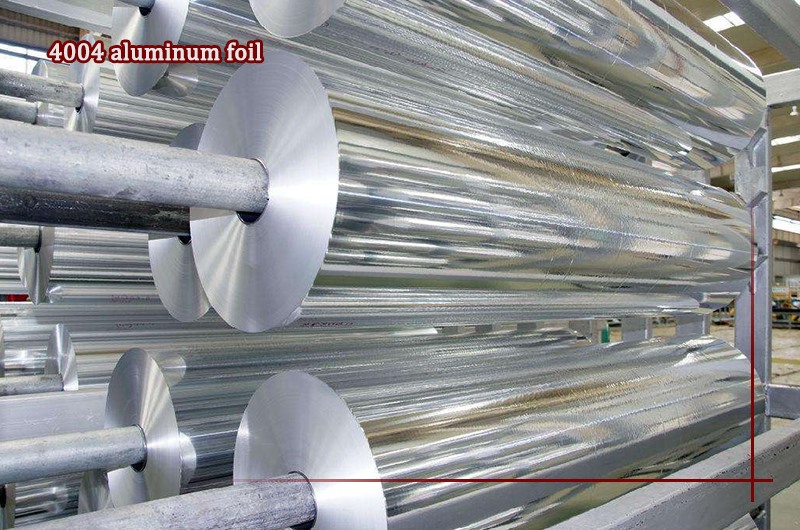The production process of hot-rolled 4004 aluminum brazing foil The production process of hot-rolled 4004 aluminum brazing foil mainly includes ingot milling, homogenization heat treatment, core plate hot rolling, clad plate hot rolling, cladding operation, heating, thermal composite rough rolling, thermal composite Finish rolling, cold rolling, finishing to finished products....
The production process of hot-rolled 4004 aluminum brazing foil The production process of hot-rolled 4004 aluminum brazing foil mainly includes ingot milling, homogenization heat treatment, core plate hot rolling, clad plate hot rolling, cladding operation, heating, thermal composite rough rolling, thermal composite Finish rolling, cold rolling, finishing to finished products.

1 Control points of the technological process
- Surface pretreatment of 4004 aluminum foil ingot
In order to ensure the quality of hot-rolled composite, it is necessary to mill the base alloy and cladding alloy ingots first, and ensure that there are no defects such as deep groove marks, aluminum chips, slag inclusions, surface cracks and looseness. The residual oil, dust, metal oxide film and other dirt on the surface must be cleaned by chemical and physical methods before rolling and compounding, so as to facilitate rolling and compounding. The surface pretreatment process is generally: alkaline washing→room temperature water washing→neutralization washing→room temperature water washing→hot water washing→drying.
- Homogenization of 4004 aluminum foil ingot
The purpose of homogenization heat treatment is to relieve the casting stress, improve the casting structure, reduce or eliminate the segregation of intragranular components, and reduce the deformation resistance. According to the different aluminum alloy grades selected, the homogenization system of the base 4004 aluminum brazing foil ingot is generally 590℃~610℃ for 10 h~12 h; the homogenization system of the coating alloy is generally 510℃~530℃ for 12 h ~ 14 h.
Blank size control According to the final product size and compound rolling deformation law, the processed core plate and cladding plate ingot are rolled to the required size for use. Note that the width of the plate should be slightly larger than the size of the finished product at this time. To ensure the uniformity of the material coating layer, the single-sided trimming of the product must be greater than 80mm. For example: The product width is 1 200 mm. Considering the accuracy of trimming and centering in the industrial production process, under normal circumstances, the width of the substrate and the full-clad board is 1 400 mm. Considering that the deformation of the cladding layer in the initial stage of hot rolling is greater than that of the substrate, the length of the cladding plate should be slightly smaller than the length of the substrate when selecting the length of the cladding plate.
Heating before hot rolling
The surface of the board should be kept clean before heating, and there should be no obvious defects on the surface. In the coating operation, first use volatile clean aviation gasoline to manually clean the base material and the coating board, and the cleaned surface is no longer allowed to have oil marks, emulsion marks, and other stains or foreign objects. After the gasoline is volatilized, place the cladding plate symmetrically on the upper and lower surfaces of the base material. Both sides and both ends are required to be symmetrical. Then tighten the steel strip to prevent the cladding plate from moving (cut the strip before hot rolling). The clad composite slab is heated in the furnace, and the appropriate heating temperature is selected according to the characteristics of the different alloys selected and the influence on the rolling composite, which can reduce the deformation resistance and increase the energy of the metal atoms on the surface to be composited, but not Increase a lot of oxidized surface and reduce energy consumption. In order to ensure that each part of the matrix and cladding plate becomes more uniform during rolling and deformation, it is required that the temperature difference between the composite slabs at the time of discharge should not be greater than 10°C.

















